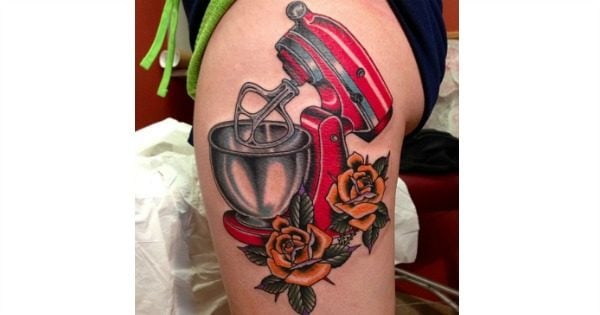By Paula Arvela, University of Wollongong
A foodie, according to Ann Barr and Paul Levy, is “a person who is very, very, very interested in food”.
Cultural scholars Josée Johnston and Shyon Baumann have somewhat expanded this definition, recently describing foodies as individuals with very specific traits.
Foodies are eager to learn about ingredients and cooking techniques; they crave unusual foods; and they make food an essential marker of social distinction and cultural identity. They do so by ascribing aesthetic attributes to food.
Not surprisingly, many foodies are keen to etch food-related tattoos on their skin, celebrating food’s artistic features rather than its nutritional/functional attributes. In this way foodies contribute to the fetishisation of food, making it an icon of consumer culture and a matter of taste and style.
In March 2016 McCrindle Research surveyed 1,011 Australians nationwide and found that one in five individuals have one or more tattoos (which rises to one in four among women). As tattoos become well and truly mainstream, the phenomenon of foodie tattoos has become more visible.
The most common are vegetables and fruits, which are usually meticulously crafted. From aubergines, to strawberries, pineapples, carrots, peas, bananas, corn and asparagus, food tattoos are typically inscribed with vibrant colours and sophisticated detail, representing highly refined still-lives imprinted on human canvas.



Top Comments
That's a kitchenaid, not a mixmaster.
Came here to say exactly this!